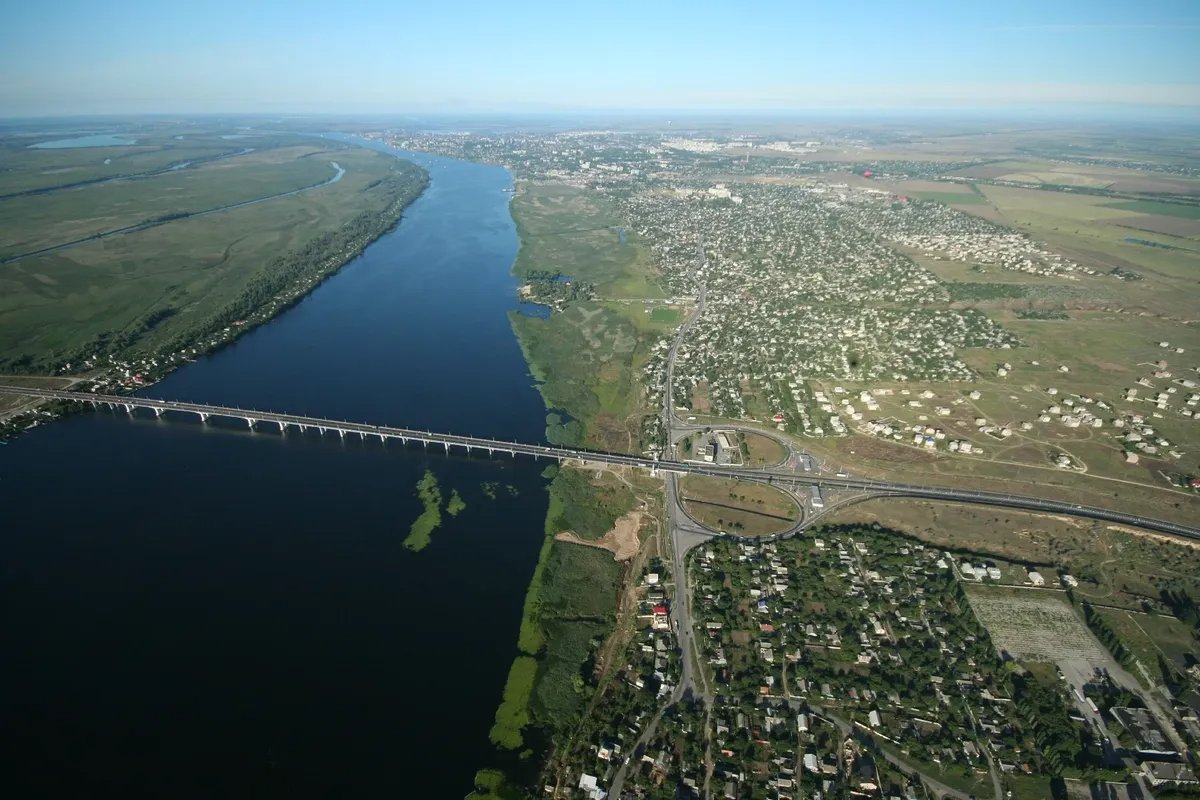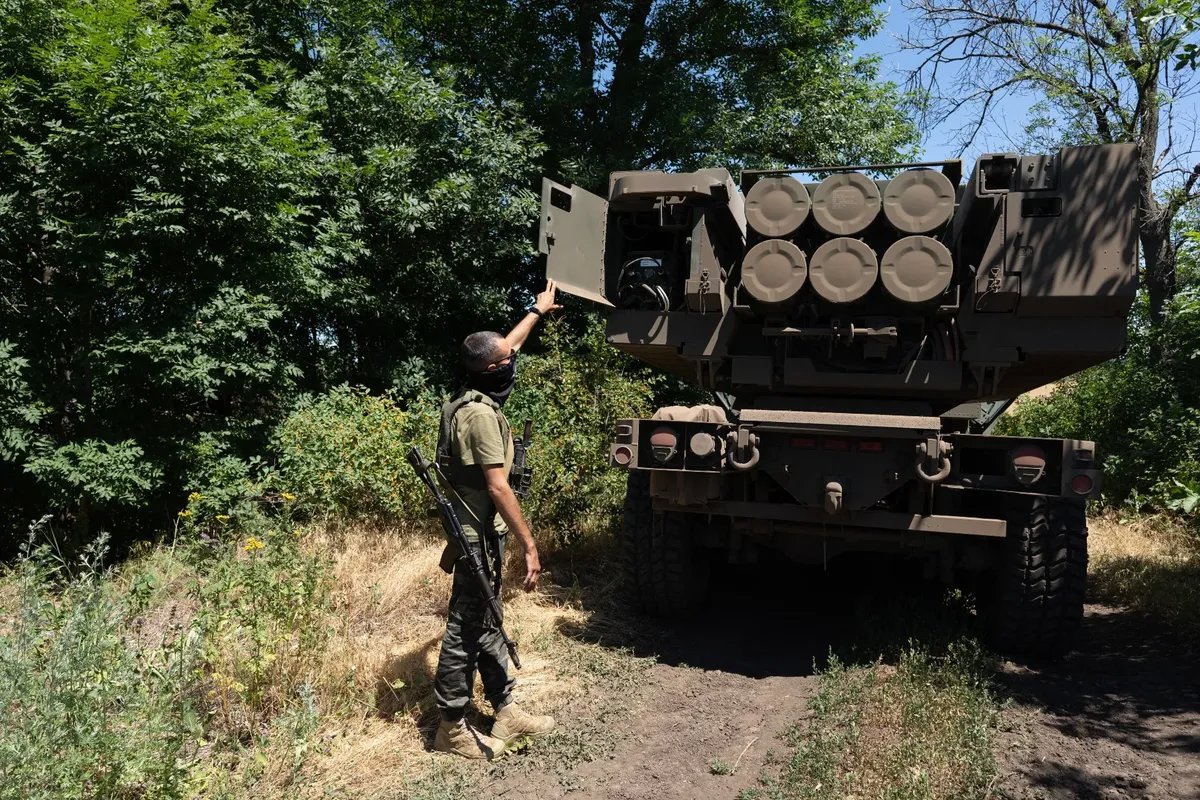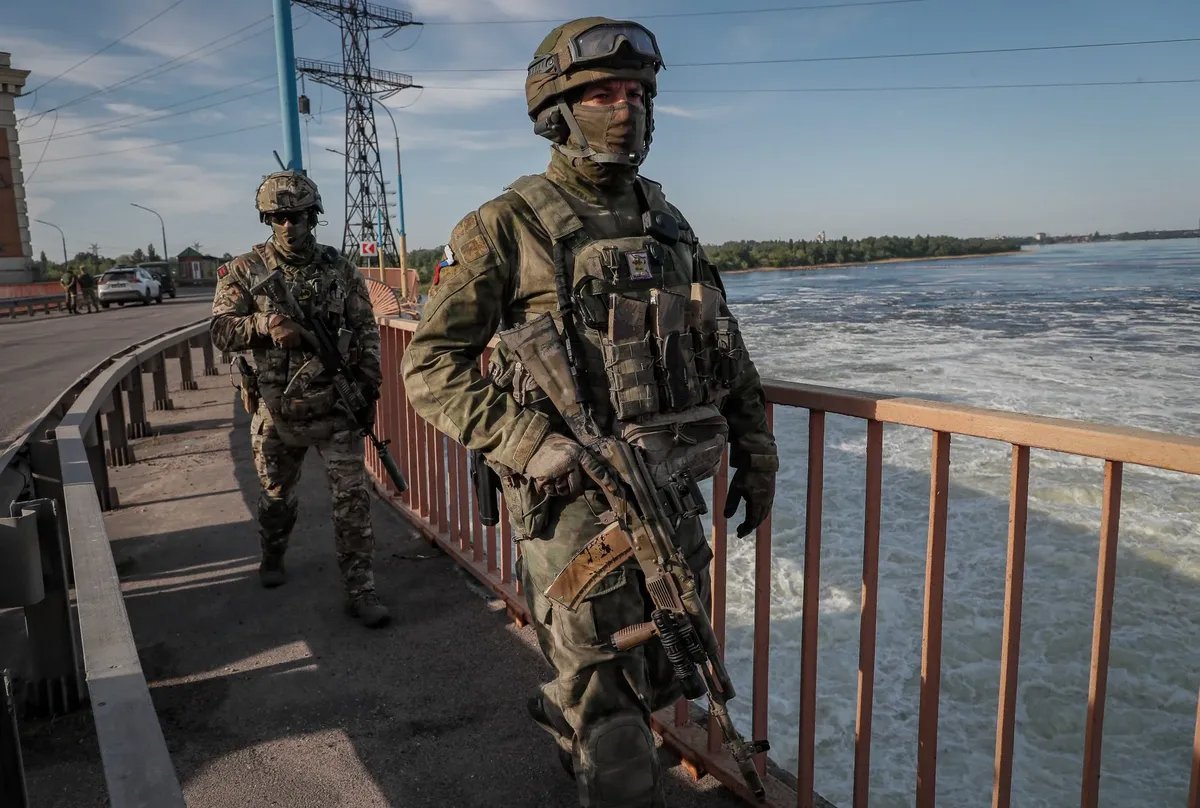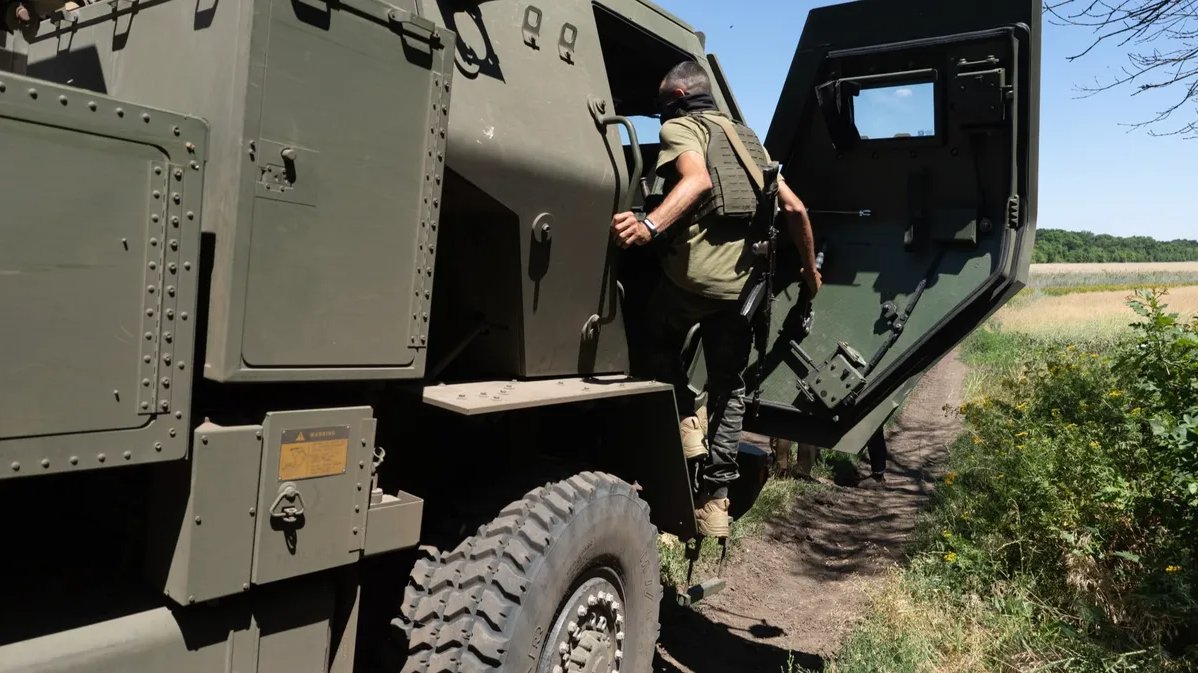A month ago, on 10 July, Ukrainian Defence Minister Oleksii Reznikov said in an interview with The Times that Volodymyr Zelensky had tasked the military command with developing a plan for the liberation of Ukraine’s southern regions. Russian lawmakers hurried to declare the Ukrainian president’s order as evidence of the country’s “agony”. However, the potential counter-offensive of the Ukrainian Armed Forces in the south and the possible liberation of Kherson soon became a cause for concern and even panic in Moscow. What is the logic behind the fight for Kherson? Military expert and board member of PIR Centre Yury Fedorov analyses the situation in southern Ukraine in an exclusive article for Novaya Gazeta. Europe.
Next goal: Kherson
The Ukrainian defence chief made another announcement: the Ukrainian Armed Forces have mobilised over 700,000 people. It was no accident: the defence minister made it clear that in a relatively short period of time, which will be enough for new recruits and officers to undergo the necessary training and join the military units and formations equipped with Western arms, Ukraine’s victory will be guaranteed. It is also safe to assume that over the next few weeks or months, Ukraine will be able to launch successful, albeit limited in their scale, operations in the south, which do not require the army to put to use all 700,000 recruits.
Ukrainian media, politicians and army officials have been talking about the potential counter-offensive in Kherson since July as something that has already been decided and is bound to take place over the next few weeks. On 19 July, the Ukrainian Armed Forces struck Kherson’s Antonivka Road Bridge, which connects the right and left banks of the Dnieper (along with the Kakhovka Hydroelectric Power Plant Bridge) with US-delivered HIMARS missile systems. In other words, the prospects of a Ukrainian offensive in the south have started to become reality. At the same time, the Ukrainian forces managed to advance up to a mile southeast of Mykolaiv.
Possible scenarios of an offensive in the south offered by Ukrainian experts and reporters suggest that Ukraine’s main goal is to demolish the Russian group of forces on the right bank of the Dnieper and to liberate Kherson. If the operation is successful, Ukraine may continue its offensive to liberate the rest of the Kherson region and the occupied areas of the Zaporizhzhia region, reaching the Isthmus of Perekop and the approaches of the Chonhar Peninsula. But even if Ukraine manages to liberate Kherson only, it will still be a major military and political victory for Ukraine and a severe defeat for Russia. It can derail the plans for the annexation of the Kherson region: it is impossible to hold a “referendum” under the gun of Ukraine’s HIMARS systems.
Such scenarios seem credible. However, lately, reporters and experts have begun to ask why the Ukrainian offensive is being postponed, despite the regular attacks on the Antonivka Bridge, ammunition warehouses and other Russian military facilities in the Kherson region with long-range missile systems. Will the offensive even take place? It seems strange that the Ukrainian leadership publicly announced the southern offensive in advance. Usually, the side that is planning an offensive tries to hide its specific objectives and the direction of the main strike. The situation may become clearer if we analyse Moscow’s reaction.

The Antonivka Bridge over the Dnieper. Photo: Uaquantum / Wikimedia
Moscow is falling into a trap
After the Ukrainian Armed Forces launched regular attacks on the Antonivka Bridge and other objects in the rear of the Russian forces deployed in the Kherson region, Moscow realised that not only is the Kherson offensive a real possibility, it can also result in the liberation of the city. Naturally, the Kremlin cannot allow that. There was an order, likely coming from Putin, to keep Kherson under Russian control, whatever it takes. From mid-July on, Russia has begun to deploy its military units previously involved in the Donbas offensive, as well as military reserves from Russia, to the Kherson and Zaporizhzhia regions. These formations mainly include paratrooper units.
By early August, the Russian command has accumulated over 60% of all its troops active in Ukraine in the Kherson and Zaporizhzhia regions, including up to 25 (some say even 30) battalion-tactical groups with a total of 20,000-25,000 soldiers and officers on the right bank of the Dnieper. Reports of Russia’s planned offensive on Mykolaiv started to trickle in.
Seizing Mykolaiv and pushing out the Ukrainian forces to the north are one of Moscow’s key goals. It needs to make sure that HIMARS cannot reach the bridges over the Dnieper.
There are also talks of the Kremlin planning an offensive on Odesa, which requires transferring the troops over the Southern Bug River. The only bridge that can be used to cross the river is located in Mykolaiv.
By concentrating the majority of its forces in the south, Russia has naturally weakened its combat potential in Donbas. Ukrainian sources report that the military units of the so-called “DPR people’s militia”, which have been depleted over the five months of constant fighting, are taking the brunt of the attacks in the area of Bakhmut and Donetsk. This creates a situation when Putin’s order on the occupation of the entire Donetsk region is becoming impossible to complete. And the main political goal of “the fight for Donbas”, that is, expanding the borders of the “people’s republics” to match the borders of the Luhansk and Donetsk regions, will not be achieved. Russia will not be able to fulfil its strategic objectives in the south either. Moreover, the Russian troops have fallen into a strategic trap.

US multiple rocket launcher system HIMARS used by the Ukrainian Armed Forces. Photo: Anastasia Vlasova for The Washington Post / Getty Images
Twenty or even thirty battalion-tactical groups currently stationed on the right bank are nowhere near enough for successfully storming and capturing Mykolaiv. It is a fortified city, ready for a siege, with a population of nearly 500,000. Storming cities is considered one of the most difficult military operations that is sure to cause major losses among the attacking forces. It should be noted that the fighting for the Rubizhne-Sievierodonetsk-Lysychansk agglomeration started in March 2022. Besides, in order to reach the outskirts of Mykolaiv, Russian troops will have to travel about 25 miles, stretching out their lines of communication. Moreover, transport convoys carrying fuel and munitions will become vulnerable to aviation and artillery attacks, as well as the activity of sabotage and reconnaissance groups. It is worth noting that several days ago, Ukraine received US anti-radiation missiles HARM designed to destroy radio location stations, namely air defence radars. The objectives of Ukrainian aviation will become much easier to fulfil if Russia’s air defence in the region is paralysed.
Most importantly, by deploying a large group of forces on the right bank of the Dnieper, the Russian military command has led it towards a trap.
Two strategic ‘bottlenecks’
The fighting capacity of any group of forces largely depends on whether it can maintain communications with the rear. This is where they get munitions, fuel, additional forces, medicine, and food from. In turn, the frontline forces send injured soldiers, damaged equipment, and military units in need of a rest or restructuring, to the rear.
In other words, military units deployed on the frontlines heavily depend on transport communications with the nearest rear areas.
The Russian group of forces on the right bank of the Dnieper has ended up in an extremely difficult situation. Its communication with the territories on the left bank fully depends on three strategic “bottlenecks”: the Antonivka Bridge near Kherson, the railway bridge over the Dnieper some 12 miles away from Kherson, and the Kakhovka Hydroelectric Power Plant Bridge about 55 miles away from Kherson. There are no other bridges that can be used by the right-bank group of forces. What is more, the Antonivka Bridge is currently unusable, and any attempts to repair it have been unsuccessful. As soon as the Russian forces fill up the holes in the bridge inflicted by HIMARS systems with concrete, the Ukrainian army launches more attacks. The railway bridge and the Nova Kakhovka bridge have not suffered much damage so far, but as soon as serious hostilities on the right bank begin, they will be cut off just like it happened with the Antonivka Bridge.

Russian troops near the Kakhovka Hydroelectric Power Plant on the Dnieper River in Kakhovka. Photo: EPA
If it loses the transport links with the left bank, the Russian group of forces on the right bank will be doomed to fail, regardless of how many soldiers and weapons it has. The more battalion-tactical groups it has, the more ammunition and other things required for active combat it requires. As soon as the ammunition runs out, the Russian troops will be forced to either capitulate or flee in a panic by swimming across the Dnieper. Perhaps, some will be able to reach the left bank. By the way, this explains why the Ukrainian army is in no hurry to launch a full-scale offensive. Trench warfare is enough for Ukraine, until one day it decides to fully cut off the Dnieper crossings and force the enemy to use up all their munitions. This will be the end of the right-bank group of forces.
The strategic or logistics trap that the Russian forces on the right bank of the Dnieper have ended up in may help the Ukrainian army liberate Kherson, which is also located on the right bank, without a long and bloody offensive that could lead to mass civilian casualties. It may help them avoid “another Mariupol”. If the Russian forces are left with no ammunition, they will not be able to fight off the attacking Ukrainian formations. In the best-case scenario, they will be allowed to retreat to the left bank, leaving their weapons behind in Kherson. In the most realistic scenario, they will end up in a POW camp. For its part, the fall of Kherson may be the start of a turning point in the war.
Join us in rebuilding Novaya Gazeta Europe
The Russian government has banned independent media. We were forced to leave our country in order to keep doing our job, telling our readers about what is going on Russia, Ukraine and Europe.
We will continue fighting against warfare and dictatorship. We believe that freedom of speech is the most efficient antidote against tyranny. Support us financially to help us fight for peace and freedom.
By clicking the Support button, you agree to the processing of your personal data.
To cancel a regular donation, please write to [email protected]

